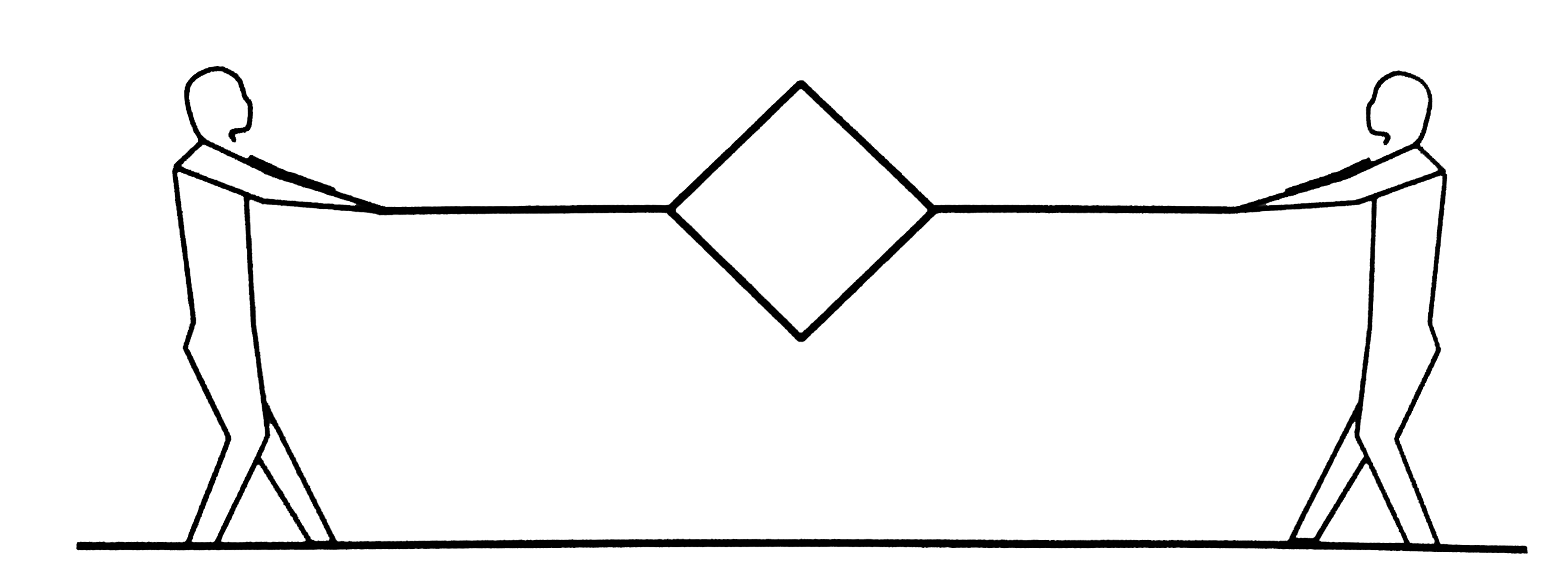Two particles A and B having charges q and 2q respectively are placed on a smooth table with a separation d. A third particle C is to be clamped on the table in such a way that the particles A and B remain at rest on the table under electrical forces. What should be the charge on C and where should it clamped? Solution in Gujrati
For equilibrium →FAC+→FCB=0
Let the charge at point c is theta
qθ4πε0x2+2qθ4πε0(d−x)2=0
Aga∈→FAC=→FCB
So,1x2=2(d−x)2
or2x2=(d−x)2
or√2x=d−x
x=(√2−1)d
Forchar≥atrest
→FAC=→FCB
14πε0×qθ(√2−1)d2+14πε0q×2qd2=0
orθ=(6−4√2)q.


Topper's Solved these Questions
- BOOK - HC VERMACHAPTER - ELECTRIC FIELD AND POTENTIALEXERCISE - Objective 28videos
ELECTRIC FIELD AND POTENTIAL
- BOOK - HC VERMACHAPTER - ELECTRIC CURRENT THROUGH GASESEXERCISE - Exercises23videos
ELECTRIC CURRENT THROUGH GASES
- BOOK - HC VERMACHAPTER - ELECTROMAGNETIC INDUCTIONEXERCISE - EXERCISE9videos
ELECTROMAGNETIC INDUCTION
Similar Questions
Mark out the correct potons.
05:21View SolutionA discharge tube contains helium at a low pressure. A large potential difference is applied across the tube. Consider a helium atom that has just been ionized due to the detachment of an atomic electron. Find the ratio of the distance travelled by the free electron to that by the positive ion in a short time dt after the ionization.
04:01View SolutionShown a metallic square frame of edga a in a vertical plane. A uniform magnetic field B exists in the space in a directon perpendicular to the plane of the figure. Two boys pull the opposite corners of the square ot deform it into a rhombus. They start pulling the corners t t=0 and sisplace the corners at a uniform speed u. (a) find the induced emf in the frame at the instant when the angles at these corners reduce to 60∘. (b) find the induced current in the frame at this instatnt if the total resistance of the frame is R. (c) Find the total charge which flows through a side of the frame by the time the square is deformed into a straight line.
 07:08View Solution
07:08View SolutionTwo particles A and B having charges 8.0×10−6C and −2.0×10−6C respectively are held fixed with a. separation of 20cm. Where should a third charged. particle be placed so that it dose not experience a net electric force?.
05:45View SolutionTwo particles A and B having charges q and 2q respectively are placed on a smooth table with a separation d. A third particle C is to be clamped on the table in such a way that the particles A and B remain at rest on the table under electrical forces. What should be the charge on C and where should it clamped?
08:47View SolutionTwo charges q and 3q are placed fixed on x-axis separated by distance 'd'. Where should a third charge 2q be placed such that it will not experience any force ?
08:47View Solution(a) Two charged particles , each charge q , are joined by an insultating string of length L and system is kept on smooth surface. Find tension in the string. (b) A particle having charge Q_(0) is placed directly below and at separation d from the bob of simple pendulum at rest. The mass of the bob is m . What charge should be given to bob so that string becomes loose ? ( c) A particle A having charge q and mass m is placed at the bottom of a smooth inclined plane of inclination theta . Where should a block B , having same charge and mass , be placed on the incline so that it may remain in equilibrium ?
07:48View SolutionTwo charge q and –3q are placed fixed on x–axis separated by distance d. Where should a third charge2q be placed such that it will not experience any force ?
 03:23View Solution
03:23View SolutionTwo charge q and –3q are placed fixed on x–axis separated by distance d. Where should a third charge2q be placed such that it will not experience any force ?
 View Solution
View SolutionTwo-particles A and B having charges 8×10−6Cand−2×10−6C respectively are held fixed with a separation of 20 cm. Where should a third charged particle C be placed so that it does not experience a net electric force?
07:15View SolutionA point charge Q is kept fixed on a table and another particle of charge q and mass m is to be placed in air in such a way that it remains suspended at the same location in a state of equilibrium. What should be the distance of particle from point charge fixed on table?
07:06View SolutionTwo charges Q and -3Q are placed fixed on x-axis separated by a distance 'd' Where should a third charge 2Q be placed such that it will not experience any force?
03:25View SolutionTwo charges q and - 3q are placed fixed on x-axis separated by distance'd'. Where should a third charge 2q be placed such that it will not experience any force ?
05:35View Solutionदो स्थिर कणो A तथा B के आवेश क्रमशः 8×10−6 कूलॉम तथा −2×10−6 कूलॉम है, इनके बीच की दूरी 20 सेमी है। तीसरा आवेशित कण कहाँ रखा जाए कि वह कोई बल अनुभव न करे?
 04:38View Solution
04:38View SolutionTwo charges q and -3q are placed fixed on x-axis separated by distance d. where should a third charge 2q be placed such that it will not experience any force?
05:45View SolutionTwo particles A and B having charges q and 2q respectively are placed on a smooth table with a separation d. A third particle C is to be clamped on the table in such a way that the particles A and B remain at rest on the table under electrical forces. What should be the charge on C and where should it clamped?
05:34View Solution

